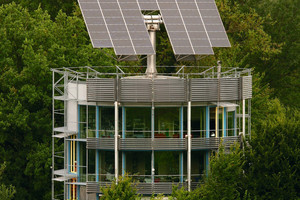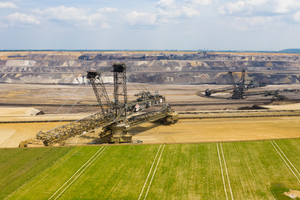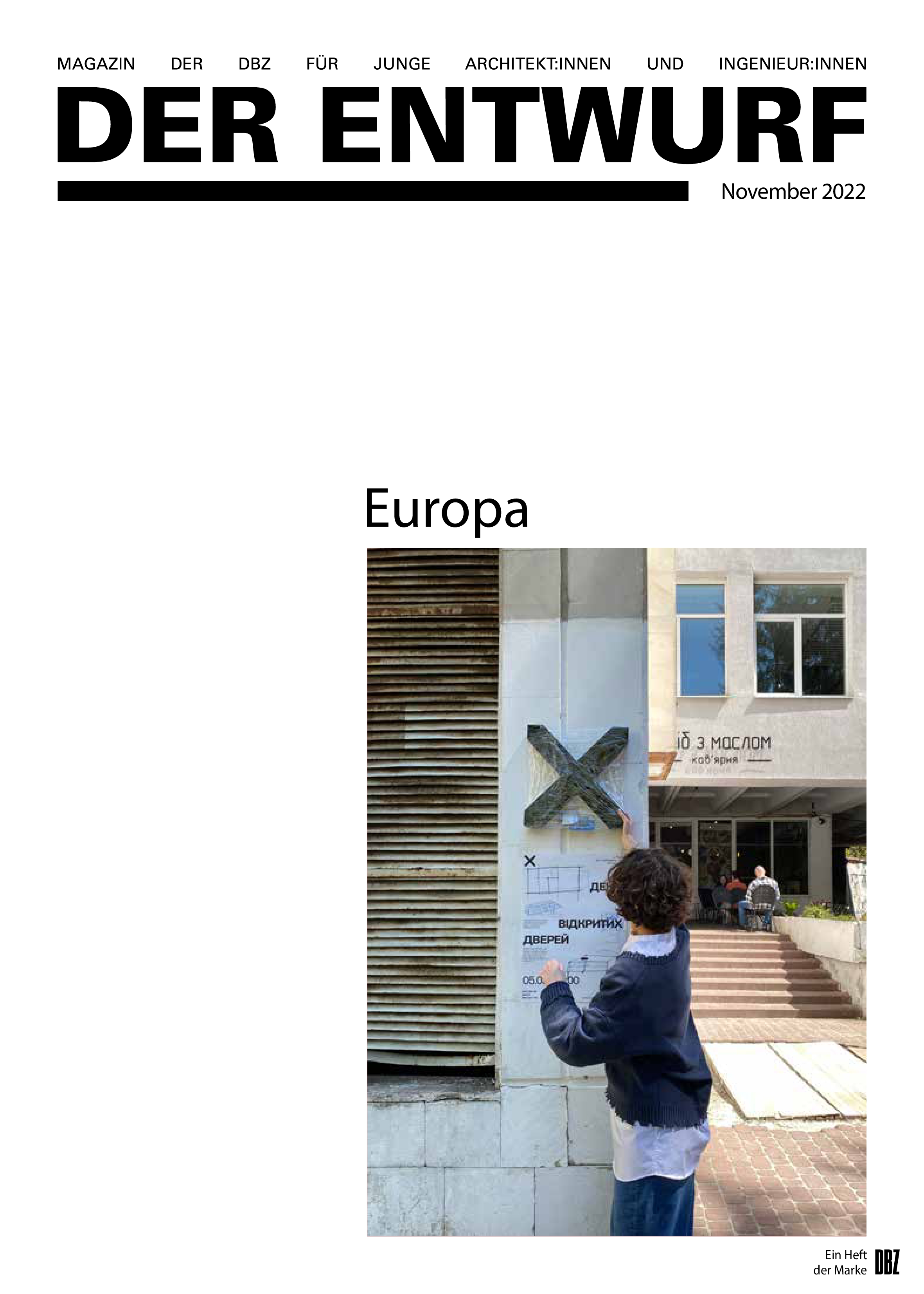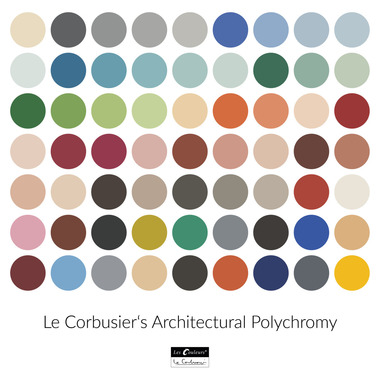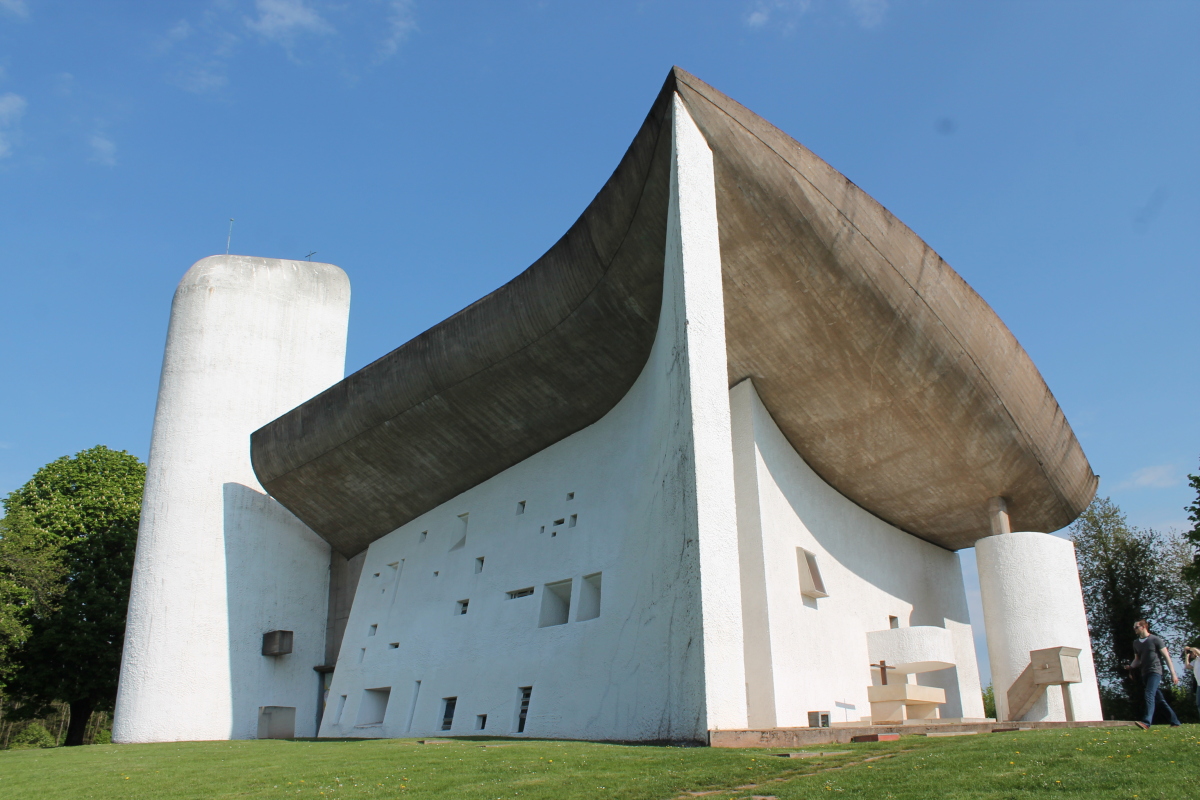 The massive consumption of materials and energy associated with many
The massive consumption of materials and energy associated with many
iconic buildings in modern architectural history, such as Le Corbusier's chapel Notre Dame du Haut in Ronchamp, is often overlooked
Foto: Frida Kopka
The massive consumption of materials and energy associated with many
iconic buildings in modern architectural history, such as Le Corbusier's chapel Notre Dame du Haut in Ronchamp, is often overlooked
Foto: Frida Kopka
Asking a historian to write a short piece about European architecture is like asking a biologist to write an article about nature. Where to begin, what to pick? Let’s start around 1800, with the Industrial Revolution – meaning: leaving out a couple of thousand years of building – and let’s make it a story of modern architecture (both the Industrial Revolution and modern architecture had an epicentre in Europe). ‘Industrial Revolution’ covers a variety of phenomena, which, despite the name, took a long time to evolve. ‘Modern’ can mean many things. A style (modernism), a movement (the modern movement), a specific period (the modern era), a condition (modernity), a process (modernization) or simply something that is not old or old-fashioned.
There is no need to make it more complicated than necessary: modern architecture here is seen as inseparably linked with the Industrial Revolution. Industrially manufactured materials such as iron, steel, reinforced concrete, glass, asbestos, and later also plastics have made architecture modern. The story of the making of modern architecture has been told many times, and usually as a ‘heroic’ one, a ‘victory’ of revolutionary innovations, and as the unavoidable and desired course of history, of growth and progress, of new and better. The history of modern architecture is commonly a story of more, bigger and better buildings and cities.
The European Industrial Revolution not only birthed modern architecture. It set planetary warming in motion as well. Moreover, it led to large-scale resource depletion, and caused an unprecedented environmental decline. Not only in Europe, but also in the many other parts of the world that were colonized by European states. Exploitation of land, resources and labour in and from the col-onies has been indispensable to achieve the ‘growth’ and ‘progress’ in the homes bases of the Industrial Revolution.
Architecture is at least complicit to this environmental deterioration. Despite architects being driv-en by noble intentions, and notwithstanding that architecture is meant to be good for humans, it is – sorry to break the news – very bad for the planet. Every built environment leaves behind a destroyed environment somewhere else. Every act of creating architecture is also an act of destruction. For a long time, this did not seem to matter, neither for architects nor for historians, but that is – finally – changing. As a historian I am not going to say what architects ought to do, or students of architecture for that matter – such as contemplating a moratorium on building. But for architecture historians there should be at least a moratorium on writing stories that do not take planetary warming and environmental decline into account. Obviously, there are many modern buildings that are amazingly creative, original, unique. It would be silly to cancel them completely and write them out of history. Yet, they have a dark side that needs to be acknowledged: the ecological impact of all the material and energy that went in, say, the heavy, sculptural beton brut of Le Corbusier’s chapel in Ronchamp, or Ludwig Mies van der Rohe’s steel-and-glass Nationalgalerie in Berlin.
A planetary warming version of architectural history invites another way of looking at conventional modern highlights. A case in point is Joseph Paxton’s Crystal Palace in London, a large building for the Great Exhibition of 1851. It was erected in Hyde Park, using modular, prefabricated iron elements, and large panes of industrially produced glass, thereby, as the story goes, revolutionizing architecture. But the Crystal Palace was more than the first prefab building kit. It was also a climate machine, in which Paxton tried to create an artificial environment, protecting visitors from the polluted air of London. After the Great Exhibition the modular elements of iron and glass were reused, for a differently shaped second Crystal Palace, elsewhere in London – in retrospect a strikingly environmentally-conscious approach. Seen in this light, the Crystal Palace is not only a marvel of modern architecture but also ahead of its time in terms of sustainability.
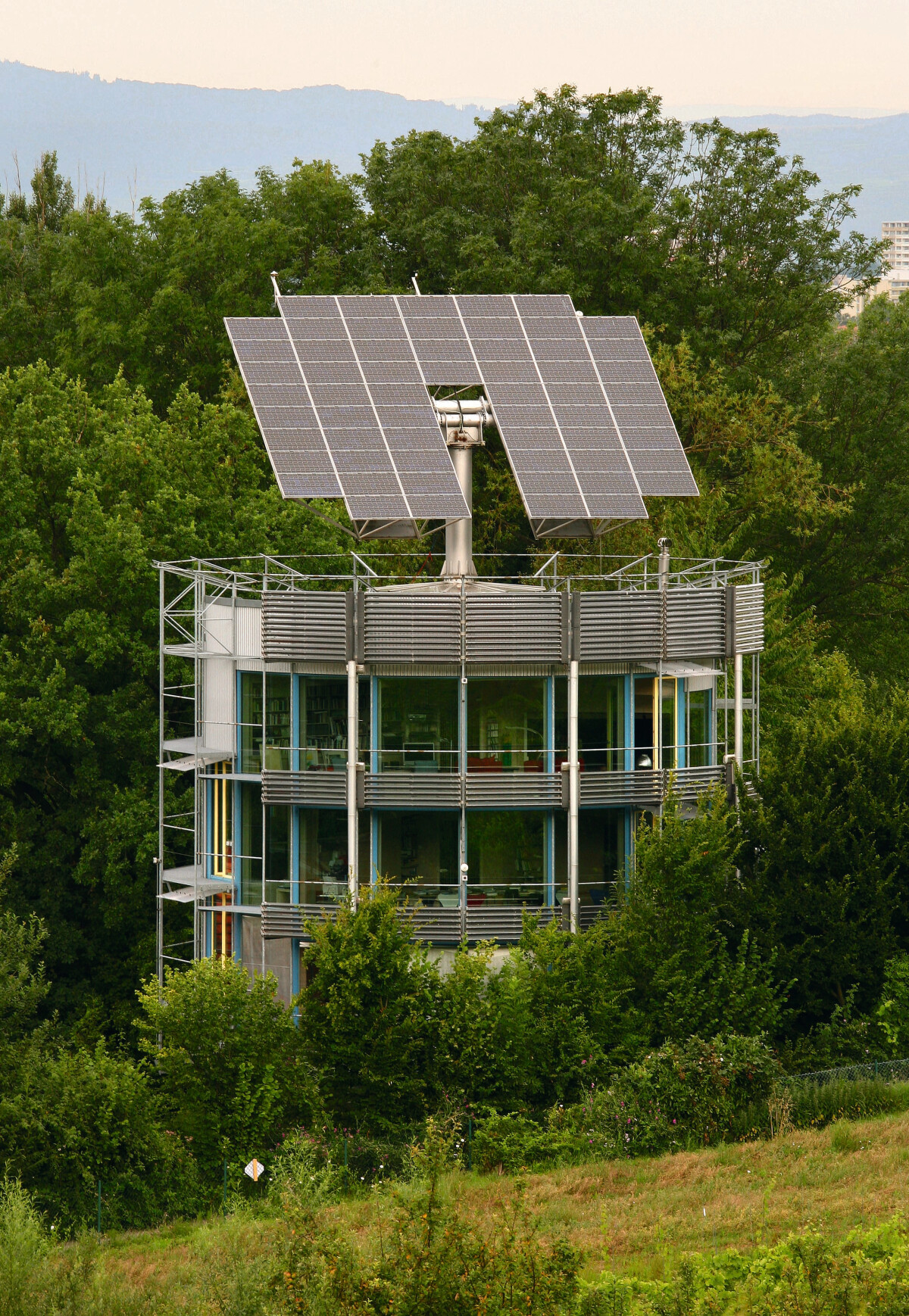 An architectural history that focusses on climate change foregrounds other buildings and projects. For example, the Heliotrop in Freiburg by Rolf Disch from the 1990s, which is a energy-plus building
An architectural history that focusses on climate change foregrounds other buildings and projects. For example, the Heliotrop in Freiburg by Rolf Disch from the 1990s, which is a energy-plus building
Foto: Rolf Disch SolarArchitektur, Freiburg
An architectural history that focusses on climate change foregrounds other buildings and projects. For example, the Heliotrop in Freiburg by Rolf Disch from the 1990s, which is a energy-plus building
Foto: Rolf Disch SolarArchitektur, Freiburg
A planetary warming perspective also makes it possible to include all kinds of projects for which there was no place in conventional histories, for instance because their designers had unfashionable ideas, which did not align with the themes of their time. A project that comes to mind is Rolf Disch’s Heliotrop in Freiburg im Breisgau (1994). The architecture of the revolving house he designed for himself and his wife perhaps does not stand out among the many great buildings from the 1990s, but its net-plus energy performance and its whole range of integrated sustainable solutions are awesome. Famously, Le Corbusier wrote in the early 1920s in "Vers une architecture", that many architects were blind to the functional beauty of planes, ships and automobiles. He spoke of ‘eyes that do not see’. The words can be echoed and applied to architects, builders, clients and historians, whose eyes (still) do not really want to see the damage architecture is doing. Perhaps for them, the corrective lens of a planetary warming perspective may be helpful. Such a lens would also make it possible to get those projects into focus that are rarely considered as architecture at all because they are too large. Yet they are definitely the product of the same modern can do, ‘growth-and-progress’ mindset as most of our buildings and cities, and they are propelled by the same conviction that humans can control the planet. Hydro dams, land reclamations, canals, irrigation projects, deep and open mining, highways, tunnels through mountains and under rivers and seas. In short, all the mega projects that often dramatically change the earth, such as the Garzweiler II surface mine near Cologne, where despite Germany’s green political ambitions the extraction of brown coal will continue for many years to come.
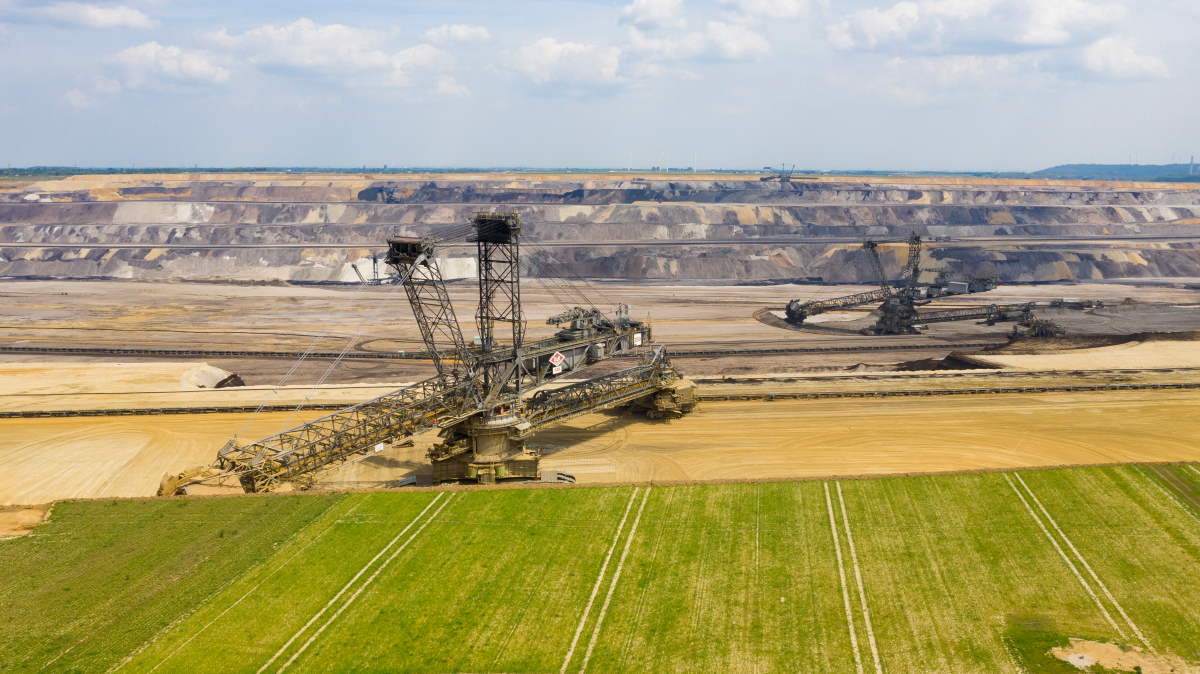 In order to understand the influence of architecture and construction in general on our environment, larger projects such as the Garzweiler II surface mine near
In order to understand the influence of architecture and construction in general on our environment, larger projects such as the Garzweiler II surface mine near
Cologne should also be considered
Foto: Arne Müseler / arne-mueseler.com / CC-BY-SA-3.0 / https://creativecommons.org/licenses/by-sa/3.0/de/deed.de
In order to understand the influence of architecture and construction in general on our environment, larger projects such as the Garzweiler II surface mine near
Cologne should also be considered
Foto: Arne Müseler / arne-mueseler.com / CC-BY-SA-3.0 / https://creativecommons.org/licenses/by-sa/3.0/de/deed.de
Le Corbusier chapel in Ronchamp and Garzweiler II may seem worlds apart in terms of artistic creativity, just as one hundred years ago the distance between ’serious’ architecture and a car may have seemed enormous for anyone without eyes that could actually see the connection. For eyes that do not see: they are equal parts of a planetary warming history of European architecture.
Vita
Hans Ibelings is a Dutch architectural historian and critic. He teaches at the Daniels Faculty of Architecture, Landscape, and Design of the University of Toronto, and is the publisher and editor of the Architecture Observer. Later this year he will publish „Modern Architecture: A Planetary Warming History“.
 An architectural history that focusses on climate change foregrounds other buildings and projects. For example, the Heliotrop in Freiburg by Rolf Disch from the 1990s, which is a energy-plus building
An architectural history that focusses on climate change foregrounds other buildings and projects. For example, the Heliotrop in Freiburg by Rolf Disch from the 1990s, which is a energy-plus building  In order to understand the influence of architecture and construction in general on our environment, larger projects such as the Garzweiler II surface mine near
In order to understand the influence of architecture and construction in general on our environment, larger projects such as the Garzweiler II surface mine near 
